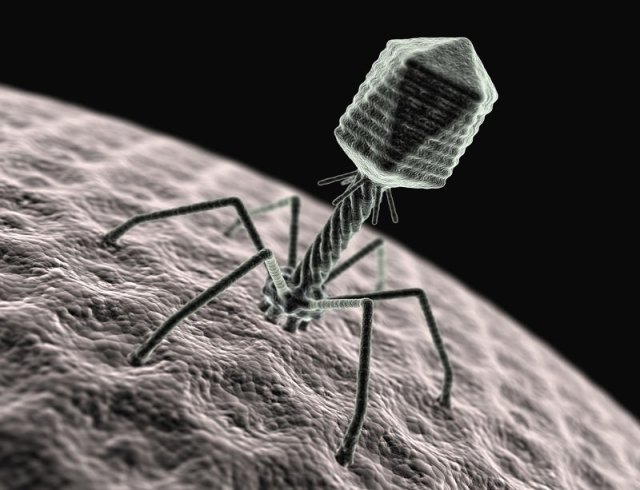
We can blame the livestock corporations for the destruction of antibiotics' ability to fight human infection.
They routinely inject all the animals we eat — chickens, cows, sheep and pigs — with huge amounts of antibiotics so that the animals grow faster and plumper, without any infection. The faster they can put meat on the kitchen table for us to consume, the greater their profits.
But the bacteria in the meats can build resistance to the antibiotics and eventually render all human infections potent. It wasn't the medical profession which over prescribed; it was the food producers. This was predicted to happen 30 years' ago but the ministries of food production in every advanced country refused to be the first to outlaw the process, arguing it would put the sale of their produce at a relative disadvantage.
Now pharmaceutical corporations refuse to invest in new antibiotics, because after spending millions of dollars and a decade of testing to ensure minimum side effects, the new antibiotic will be useless within a short time, due to multi-resistance from DNA exchange between bacterial species.
However, a new and old technique may deliver us from purgatory. This is the use of phages to treat pathogenic bacterial infections, called phage therapy.
Phages are viruses that act only on bacteria. Like all viruses, phages consist of a protein coat, which encompasses a short piece of DNA or RNA that codes for a very small number of genes.
Phages are quite specific and can only attack bacteria that have a surface protein to which it can lock on and gain entry to the bacterial cytoplasm. It then forces the bacterium to synthesise its products instead of the host proteins, to produce thousands of virions, and thus it becomes self-replicating inside the bacterium.
Eventually it causes destruction or lysis of the target bacteria. It has few side effects and few disadvantages.
Phages have been known for more than a century, so why have they not been used? Well they have — in the former Soviet Union, Poland and especially in Georgia.
Frederick Twort (1877-1950) discovered phages in 1917 in sewers, rivers, human stools and waste runoff from pipes. When antibiotics were discovered in 1941 and marketed widely in the West, US scientists lost interest in phage therapy. However Russian scientists used phages successfully to treat the wounds of soldiers during World War II and continued to develop and refine this technique.
In Poland, phages have been used against diarrheal diseases caused by E. coli; Shigella; Vibrio, which causes cholera; and against wound infections caused by pathogens of the skin like Staphylococci and Streptococci.
New interest by the West can be traced back to 1994, when it was demonstrated in an animal model that the use of phages could improve the success of skin grafts by reducing the underlying Pseudomonas aeruginosa infection. In the West, no therapies are currently authorised for use on humans, although phages for killing the food poisoning bacteria Listeria are now in use.
Because phages infect and kill bacteria using mechanisms that differ from those of antibiotics, specific antibiotic resistance mechanisms do not translate into mechanisms of phage resistance. Phages consequently can be readily employed to treat antibiotic-resistant infections, such as against multi-drug-resistant Staphylococcus aureus golden staph.
The relatively narrow host range exhibited by most phages limits the number of bacterial types with which selection for specific phage-resistance mechanisms can occur. But further phage research for a greater variety of strains should minimise that problem.
The first human trial in Australia is reported to have begun in Adelaide at Queen Elizabeth Hospital. A female patient who had been suffering from chronic sinusitis, which was resistant to all known antibiotics, was given a nasal rinse, full of phages to target multi-resistant golden staph. An older, female patient, with a multi-resistant urinary tract infection, was successfully treated in Sydney at Westmead Hospital with phage therapy in 2010.
Doctors at Westmead microbiology department have won a grant to build up a library of phages from faecal specimens of patients in the hospital to target E. coli and Krebsiella infections, causing sepsis in intensive care patients.
Phage therapy will be particularly useful to combat infections where a biofilm has formed. A biofilm is where the bacterial cells stick together, forming a slimy extracellular matrix of polysaccharides and protein, which prevent the penetration of antibiotics.
Biofilms may form on non-living surfaces especially, surgical insertions in hospital settings, from the patient's own organisms living naturally on their skin.
Phages can interact with immune systems, potentially resulting in harmful immune responses, though there is little evidence that this actually is a concern during phage treatment. Nonetheless, it can be imperative for certain phage therapy protocols to use highly purified phage preparations to prevent anaphylactic responses to bacterial components, such as the endotoxins that can be found in crude phage lysates.
Phages are also versatile in application form, as liquids, creams, impregnated into solids, as well as being suitable for most routes of administration. Different phages can also be mixed as cocktails to form a hit squad, to broaden their properties, typically resulting in a greater antibacterial spectrum.
Phages, as antibacterial agents, have a number of properties that make them compelling alternatives to chemical antibiotics. It has been a tragedy for many victims of multi-resistant bacterial infections that phages have been forgotten for so long in the West.
Like the article? Subscribe to Green Left now! You can also like us on Facebook and follow us on Twitter.